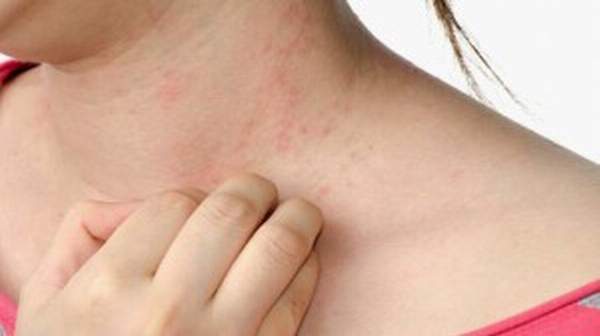What's in this article?
Hives Overview
Hives also known as urticaria (ur-tih-KAR-e-uh) is a skin reaction that causes itchy welts, which can range in size from small spots to large blotches several inches in diameter. Hives can be triggered by exposure to certain foods, medications or other substances.
Hives are itchy, raised welts that are found on the skin. They may be red and painful to touch. In most cases, hives are caused by an adverse reaction to medication or an allergic reaction to an irritant.
Angioedema is a related type of swelling that affects deeper layers in your skin, often around your eyes and lips. In most cases, hives and angioedema are harmless and don’t leave any lasting marks, even without treatment.
The most common treatment for hives and angioedema is antihistamine medication. Serious angioedema can be life-threatening if swelling causes your throat or tongue to block your airway.
Hives facts
♦ Hives (medically known as urticaria) are red, itchy, raised areas of skin that appear in varying shapes and sizes, each one characteristically lasts no longer than six to 12 hours.
♦ Hives is very common, and most often their cause is elusive.
♦ Hives can change size rapidly and move around, disappearing in one place and reappearing in other places, often in a matter of hours.
♦ Ordinary hives flare up suddenly.
♦ Physical hives are produced by direct physical stimulation by environmental forces.
♦ Treatment of hives is directed at symptom relief while the condition goes away on its own.
♦ Antihistamines are the most common treatment for hives.
♦ Hives typically is not associated with long-term or serious complications.
What Causes Hives?
Hives are usually caused by an allergic reaction to something that you have encountered or swallowed. When you are having an allergic reaction, your body begins to release histamines into your blood. Histamines are chemicals your body produces in an attempt to defend itself against infection and other outside intruders. Unfortunately, in some people, the histamines can cause swelling, itching, and many of the symptoms that are experienced with hives. In terms of allergens, hives can be caused by factors such as pollen, medications, animal dander, and insect bites.
It should be noted that hives might also be caused by circumstances besides allergies. It is not uncommon for people to experience hives as the result of stress, tight clothes, exercise, illnesses, or infections. It is also possible to develop hives as the result of excessive exposure to hot or cold temperatures or from irritation due to excessive sweating. As there are many potential causes, sometimes the actual cause of hives cannot be determined.
Symptoms of Hives
The welts associated with hives can be:
♦ Red or flesh-colored
♦ Intensely itchy
♦ Roughly oval or shaped like a worm
♦ A few millimeters to several inches across
Most hives go away within 24 hours. Chronic hives can last for months or years.
Angioedema
Angioedema is a reaction similar to hives that affects deeper layers of your skin. It most commonly appears around your eyes, cheeks or lips. Angioedema and hives can occur separately or at the same time.
Signs and symptoms of angioedema include:
♦ Large, thick, firm welts
♦ Swelling and redness
♦ Pain or warmth in the affected areas
How Are Hives and Angioedema Treated?
The best treatment for hives and angiodema is to identify and remove the trigger, but this is not an easy task. Antihistamines are usually prescribed by your doctor to provide relief from symptoms. Antihistamines work best if taken on a regular schedule to prevent hives from forming in the first place.
Chronic hives may be treated with antihistamines or a combination of medications. When antihistamines don’t provide relief, oral corticosteroids may be prescribed.
If you are experiencing a mild case of hives that could resolve itself in a period of time, you may not need any treatment. In these circumstances, your doctor might suggest that you seek temporary relief by:
♦ taking antihistamines, such as diphenhydramine
♦ avoiding irritating the area
♦ avoiding hot water, which may aggravate the hives
For severe hive or angioedema outbreaks, an injection of epinephrine (adrenaline) or a cortisone medication may be needed.





